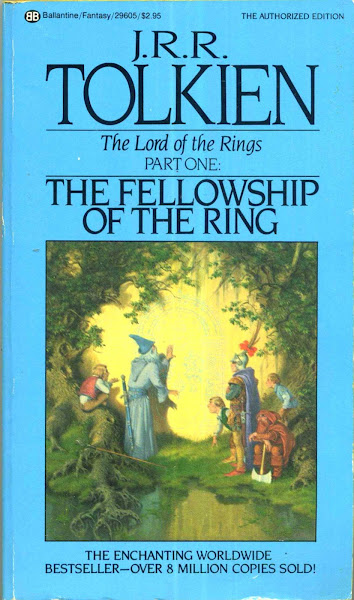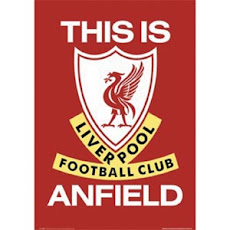This appears on nba.com
That familiar fire:
Avery Johnson does a coaching clinic in Manila
by rick olivares pic (top) by brosi gonzales
The Little General was in his element.
Sixteen years after he hung up his high tops, three
years after he last held a NBA coach’s whistle, Avery Johnson, even at 49 years
of age looked spry and deft enough to still run the fastbreak and knock down eighteen-foot
jumpers.
Johnson felt every fiber of his being fire up. “Uh
huh,” he grunted nodding his head with his eyes ablaze. “Here we go.”
No, he wasn’t running Greg Popovich’s offense at San
Antonio. No, he wasn’t psyching up the Dallas Mavericks for an all-important
game.
Johnson was at the Gatorade Hoops Center at
Mandaluyong City; a strange and faraway place from where he once directed
basketball traffic at the Alamo Dome en route to an NBA title with the San
Antonio Spurs in 1999.
In Manila for the first ever Gatorade NBA Training
Center, Johnson together with current Portland Trailblazers Wesley Matthews and
Robin Lopez, presided over a camp for high school, college and pro basketball
players teaching them the game as they learned it. Then in closing, he gave a
30-minute Coach’s Talk to some 50 local coaches where he demonstrated plays he
runs with few seconds in the shot clock and expounded on the “three Ds” that
are crucial in his approach to the game.
“Everyone knows the game,” said Johnson. “We all know
it. That is why we are here or why you are at your position as coach or player.
Now in winning… there are three things that are important to me – details,
determination, and discipline.”
The five-foot-eleven former NBA champion and Coach of
the Year (2006) paused for a moment to let the three criteria to sink in.
It’s in the
details.
“Everyone knows the game,” repeated Johnson for
effect. “But not everyone knows the details. And it’s the details; the small
ones too that will enable you to win.”
“What is a point guard? I am more than an extension
of the coach where I run the plays. But there’s more. It’s running the plays
and the system very efficiently. That means trying to limit your turnovers. I
have to be able to do a little more – rebound, hit those jumpers and
three-pointers. Take it to the rim and find teammates. It means if someone is
not where they are supposed to be then to direct them to where they should and
find a way to get him that ball. It’s to read the opponent’s offense and relay
that to your teammates so you know how to defend it. It means being the first
line of defense and how I play is how my teammates will adjust. It means
providing leadership on the floor and off the court. It’s a lot. That is why
the job is simply not entrusted to anyone.”
During the Gatorade NBA Training Camp, he noted that
Filipino shooters tend to stand upright when shooting the ball. “The instant
you catch that ball you should bend your body as if you’re coiled to take that
shot. If you’re in a standing position you waste a second or so in getting in a
shooting position. Whereas if you’re coiled for an attack, it’s like a catch
and shoot and makes it easy to go for that jumper with a split second opening
before the defense.”
He also demonstrated moving to certain positions on
the floor before moving to a secondary one to lose the defense and take an open
shot. Elucidated the coach: “Players have to be able to make good reads on the
flow. Knowing when to cut, when to roll, and when pop out can make the difference.”
Johnson played for and alongside some Hall of Famers
including a few who are one day soon headed for the Naismith Memorial. He also
apprenticed under some of the same caliber. As point guard, he was the coach’s
extension on the court. “It’s a responsibility,” Johnson said of the point
guard position. “You have to be up to it since you handle the ball a lot.”
In 1,054 games spread across six NBA clubs, Johnson
averaged 5.5 assists versus 1.7 turnovers per game. He also averaged 8.4 points
per game on .479% field goal accuracy.
You have to
be determined.
During the summer of 1988 after playing for two years
for the Southern University Jaguars, a little known school playing in the
Southwestern Athletic Conference, Avery Johnson applied for the NBA Draft. He
averaged a double double (11.4 points and 13.3 assists) in his senior season yet
in spite of his feat (something not accomplished again until decades later),
his name wasn’t called out among the 75 ones selected by any of the 25 clubs.
Undaunted, Johnson played for a few months in the
now-defunct United States Basketball League before he was picked up by the
Seattle Supersonics.
“Not getting drafted,” noted Johnson of the snub,
“can be a humbling experience. That meant I wasn’t good enough. So I had to
work on my game. I am 5’10”, small by NBA standards but just about the right
size for a Filipino guard or maybe even smaller.
“People say that basketball is a big man’s game,”
said Johnson. “Yes and no. You all heard about Isaiah Thomas, John Stockton,
Bob Cousy, Mugsy Bogues, Chris Paul, Allen Iverson and the list goes on. The
small man is not a novelty. He’s a part of the game and he has to put on his
work boots the same way as big men have to do.”
During the training camp at the Gatorade Hoops
Center, Coach Avery showed how being trapped into the backcourt line could be
an advantage for him by quickly turning on the jets and using space to go on
the attack.
And for his career, he registered 1,007 steals and
154 blocks.
You have to
be disciplined.
“I am a journeyman by NBA standards,” admitted
Johnson. “At five-foot-ten inches tall, coaches and general managers are
nervous. They want taller players. So every day, I worked my butt off.”
Early in his NBA career, Johnson was traded three
times, waived twice, and saw his contract not renewed when his contract
expired. “I am a survivor,” he summed up about his career. “To be a survivor
and a basketball player, you have to be disciplined.”
He was relentless in his pursuit of perfection. He
worked hard on improving his game playing it on both ends of the court and was
always considered a positive force in and out of the locker room. “I am
fortunate enough to have played that long. When you have your number (#6)
retired by a club (the San Antonio Spurs) that means I did something right.”
An NBA championship in 1999. The recipient of the
NBA’s Sportsmanship Award in 1988. A retired number. A Coach of the Year Award
in 2006. Western Conference Champion in 2006 and a NBA All-Star Game head coach
berth in 2006.
Today, Johnson works as an ESPN analyst and does a lot
of coaching clinics on the side. Over lunch on the day of the Gatorade NBA
Training Center, the coach got worked up. He enjoyed himself so much that what
was supposed to be an hour’s worth of drills for the athletes went on a little
longer cutting short the coaches session.
“I wish it was longer,” said College of Saint Benilde
assistant coach Rafa Dinglasan. “There’s so much to learn.”
“I would not have missed this for anything,” added
Edgar Macaraya, coach of NAASCU champions, St. Clare. “But I wish it was
longer. Bitin.”
“Maybe we can do this again,” volunteered Johnson to
NBA officials. “A three-day coaching course. That’s just about right. There’s
so much we can teach and help grow the game here in the Philippines.”
Johnson felt every fiber of his being fire up. “Uh
huh,” he grunted nodding his head with his eyes ablaze. “Here we go.”
The Little General was in his element.
Additional reading: Portland Trailblazers' center Robin Lopez on comic books.











No comments:
Post a Comment